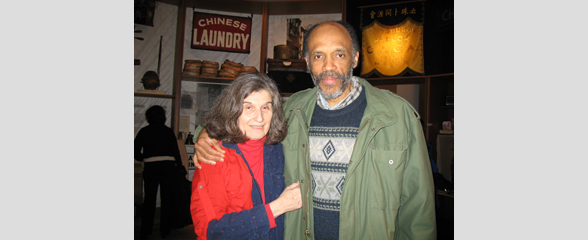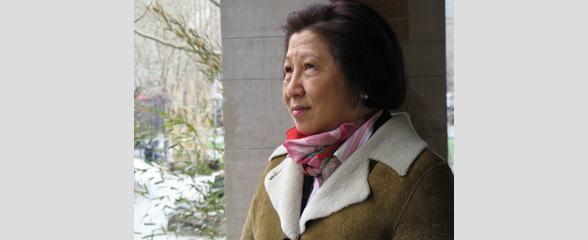Community development

2008.040.002 Oral History Interview with Jenny Ye February 2, 2008
Jenny Ye was born in Manhattan in 1991, and has been a resident of Chinatown her whole life. She actively volunteers and coordinates for community-oriented organizations such as Chinatown Youth Initiatives, Committee Against Anti-Asian Violence (CAAAV), Chinatown Literacy Project, and Asian Pacific American Youth Alliance (APAYA). Ye first became aware of gentrification at a Chinatown Tenant Union meeting. She visualizes Chinatown as having aged low-rise buildings, fire escapes, no elevators, and inhabited by mostly immigrant families. When asked to define gentrification, she envisions tall buildings, the process of uprooting low-income communities and shifting them elsewhere to give privilege to more affluent residents who are able to afford the renovated real estate. Ye argues that gentrification does not solve issues with safety, crime, sanitation, and poverty because it merely relocates it to another neighborhood. However, she also empathizes with landlords because her parents, who have investments in real estate, rely on gentrification and the ability to raise rent in order to sustain the family’s quality of life. Finally, Ye talks about the changes in Chinatown, claiming that it is now shrinking, and explains that the changes occurred without consideration for the neighborhood’s businesses and residents; in other words, she fears that gentrification will transform Chinatown into “South SoHoâ€.

2008.040.009 Oral History Interview with Daniel Carter and Marilyn Sontag January 2, 2008
Husband and wife Daniel Carter and Marilyn Sontag moved together to Chinatown in 1970, where they continue to live and work today—Carter as a musician and writer and Sontag as an abstract artist and part-time gallery coordinator. In their interview, they describe their meeting in Italy and their decision to subsequently relocate to New York City. The couple illustrates Chinatowns community of artists present during the 70s and 80s, and describes the ways in which that atmosphere has changed. Additionally, they explain how they have seen an evolution in SoHo and Little Italy, evident in the increased development and prevalent “boutique culture.†Along these same lines, Carter and Sontag also see a gradual but seemingly constant change in population: as younger, wealthier residents move in, older residents—particularly Asian and Italian residents—are pushed out by higher rent prices. Both would like to see more affordable housing in Chinatown, Little Italy, and SoHo, and Carter expresses a personal struggle with what he perceives as disregard or disrespect for customs and culture in New York, or what he refers to as “brutal displacement.â€

2008.040.022 Oral History Interview with Spring Wang September 8, 2008
Spring Wang is an independent developer who was born in China and raised in Taiwan. In this oral history, she discusses her experience of moving to the United States in 1968, where she attended college and became a Marxist heavily involved in political and social movements. One organization with which she associates herself is Asian Americans for Equality (AAFE), a group devoted to talking about social services, equal employment opportunities, and housing development. She reflects on her experience in New York’s Chinatown, paying particular attention to the infrastructure and ongoing development that trickles into Soho, the Lower East Side, and Tribeca.
Events like September 11th and the global economic crisis come into play when Wang analyzes the demographic shifts in the community. According to Wang, new Chinese immigrants are more self-confident and forward-looking in contrast to earlier immigrants. She believes that because Chinatown is a small area, the institutions or physical aspect of the neighborhood is more essential than the residential population to the survival of Chinatown. She proposes that Chinatown builds larger institutions, advocating for the creation of places with more cultural spirit and symbolic significance to act as a “magnet†for the people.